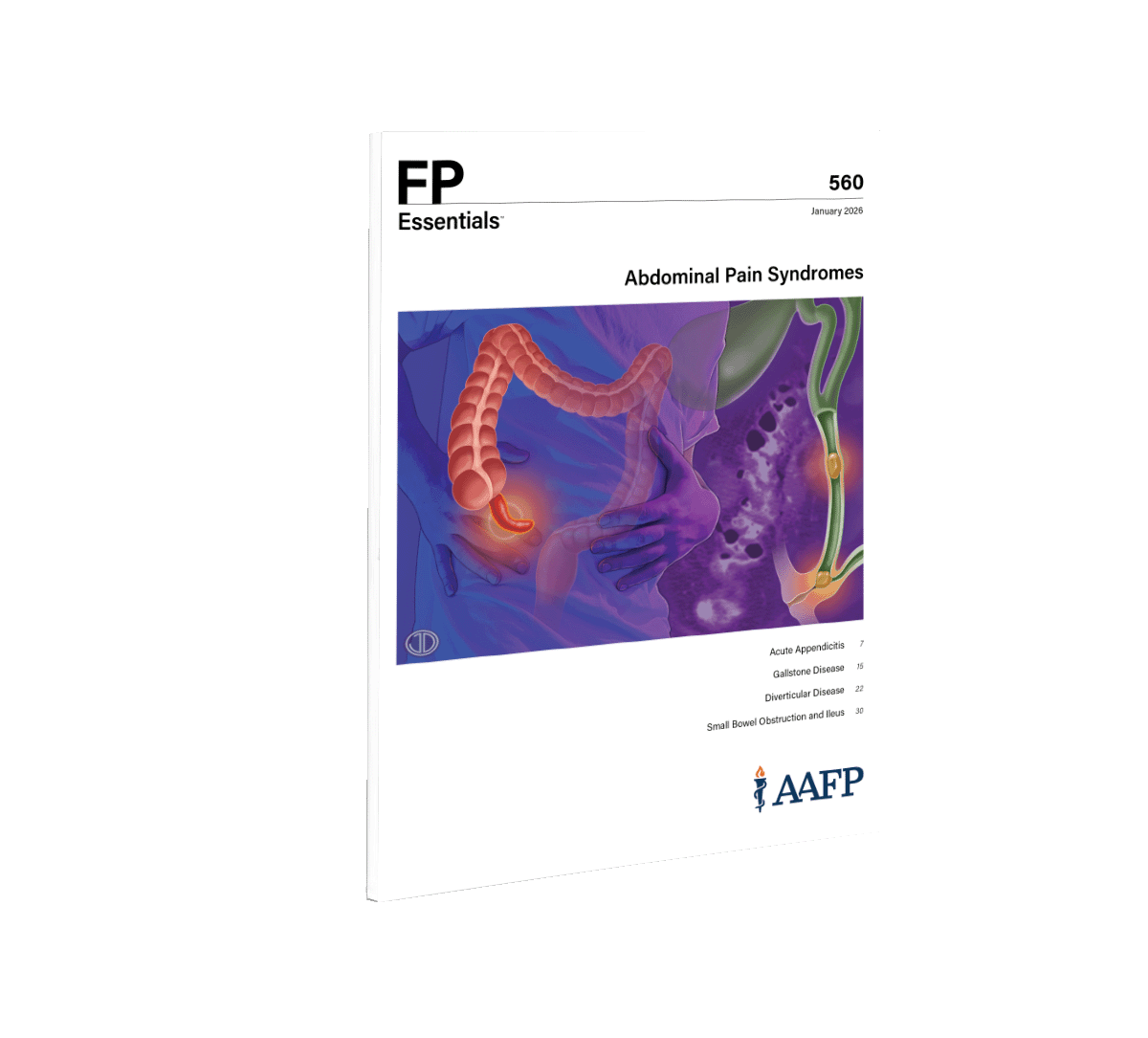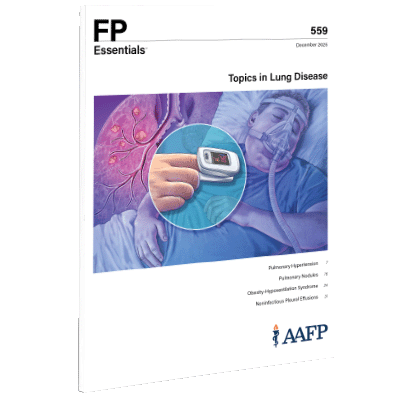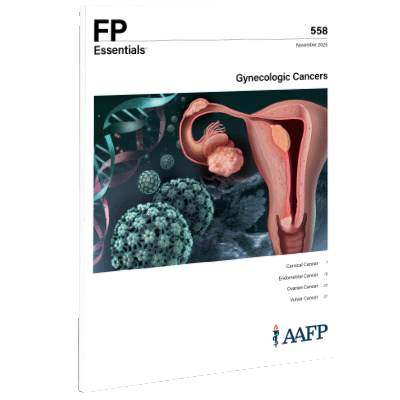
Current Edition
Acute Appendicitis
Gallstone Disease
Diverticular Disease
Small Bowel Obstruction and Ileus
Subscribe to FP Essentials
Peer-reviewed. Ad-free. Authoritative. Monthly monographs
focused on new diagnostic methods, treatments, and guidelines.
Receive monthly editions in print and online, or online only.

Foot Conditions in Adults
December 2025 | Edition #559
- Pulmonary Hypertension
- Pulmonary Nodules
- Obesity-Hypoventilation Syndrome
- Noninfectious Pleural Effusions

Gynecologic Cancers
November 2025 | Edition #558
- Cervical Cancer
- Endometrial Cancer
- Ovarian Cancer
- Vulvar Cancer
Earn CME with FP Essentials
Take the CME Quiz and earn 5 CME credits per edition.